#homage to Dave Stevens
Photo
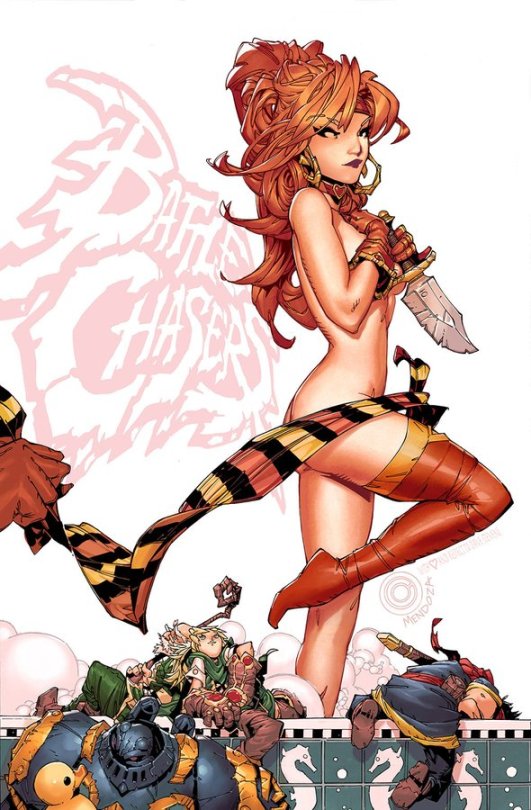
Variant cover for Battle Chasers #10 by Chris Bachalo
A loving homage to Dave Stevens
508 notes
·
View notes
Text

Archie's Valentine Spectacular, cover by Dan Parent
Homage to the cover of Planet Comics #1, April 1987, by Dave Stevens

Already homaged by Dan for the covers of Sabrina Anniversary Spectacular,

Happy Horror Days
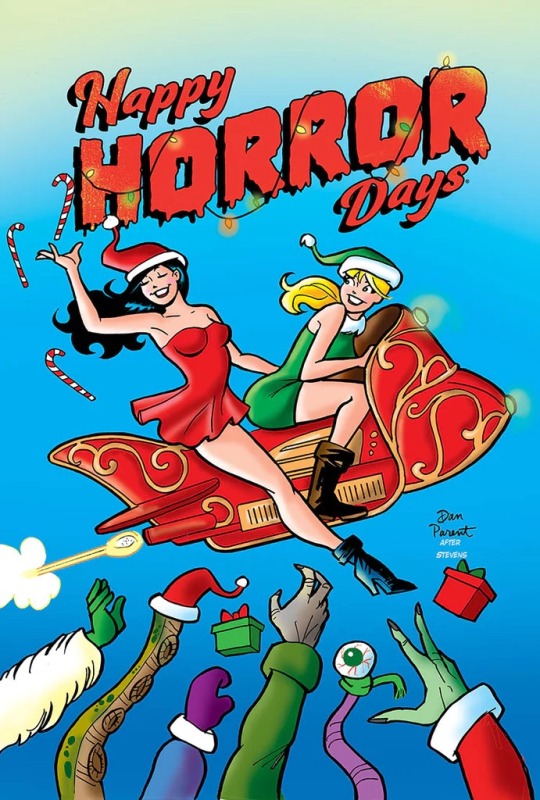
and Betty and Veronica Friends Forever: Rock and Roll
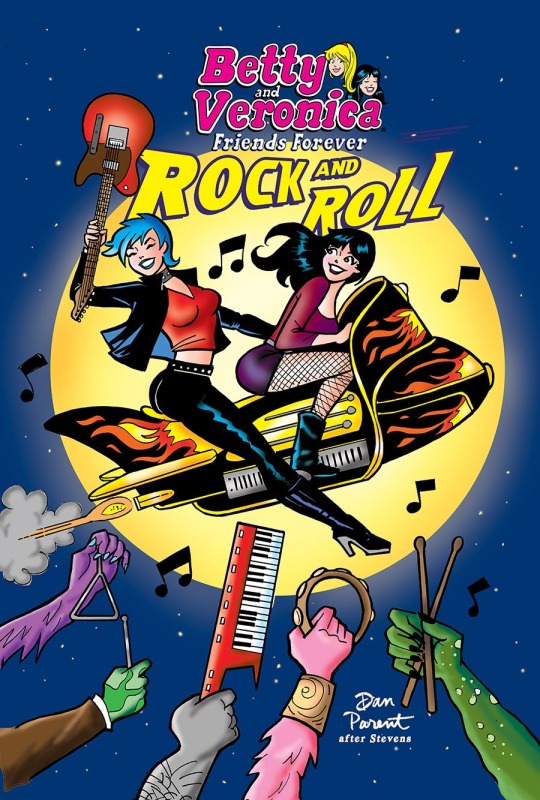
Andrew Pepoy also did his own B&W take on that iconic cover.

#Comics#Pin up#Archie#Betty and Veronica#Betty Cooper#Veronica Lodge#Sabrina#Cassie Cloud#Amber Nightstone#Jola Kitt#Valentine's day#Dan Parent#Dave Stevens#Planet Comics#Andrew Pepoy
63 notes
·
View notes
Text

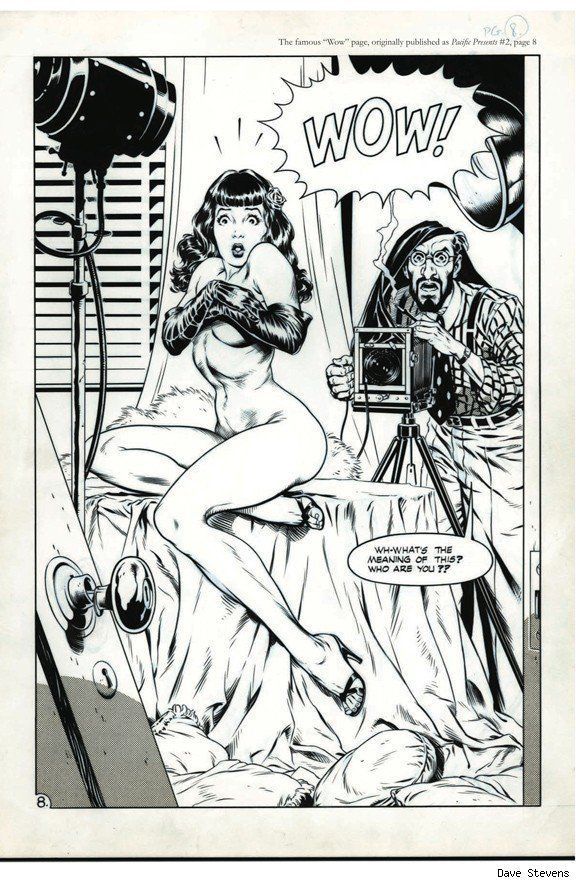

Jerry Ordway’s homage to Dave Stevens’ Rocketeer
The Power of Shazam (1994 DC Comics) by Jerry Ordway
The Rocketeer (Betty) by Dave Stevens (1982 Pacific Comics)
91 notes
·
View notes
Video
youtube
ASK EDDIE - August 24 2023
FNF prez Eddie Muller responds to film noir fan questions fielded by the Foundation's Director of Communications Anne Hockens. In this episode, we discuss the recent changes at TCM, Eddie’s memories of Robert Osborne, the new Philip Marlowe book, The Second Murder, Poker Face and its inspiration Columbo, female investigators in film noir, and more. We wind up the show with a new game, “Femme Fatale or Not?”. On the cat front, Charlotte is a diva and Emily won’t come out of her trailer.
Want your question answered in a future episode? We solicit questions from our email subscribers in our monthly newsletters. Sign up for free at https://www.filmnoirfoundation.org/signup.html
Everyone who signs up on our email list and contributes $20 or more to the Film Noir Foundation receives the digital version of NOIR CITY Magazine for a year. Donate here: https://www.filmnoirfoundation.org/contribute.html
This weekend’s questions:
1. I am wondering if there's a way to find out which movies screened at the first NOIR CITY. I'm also wondering when you first started distributing those spectacular programs.
Jeannin
2. Would you address the recent cutbacks and layoffs at TCM that are affecting NOIR ALLEY.
Andrew
3. I would love to know about your relationship with Robert Osborne.
Stacy
4. The estate of Raymond Chandler hired Scottish crime fiction writer Denise Mina to pen a new Philip Phillip Philip Marlowe novel, THE SECOND MURDERER was released in August. Have you read it and if so, what did you think? What do you think in general of the practice of having contemporary authors pen reboots based on other writers' classic detective characters? Are there any examples of this that you think are particularly well-done--OR that you think egregiously miss the mark?
Kathleen
5. Have either of you seen the new TV series POKER FACE? It’s not a whodunit. It’s a howcatchem. It’s been said it’s a homage to the old COLUMBO series. Were you two fans of COLUMBO. Was Peter Falk ever in a noir movie?
Alan, San Anselmo, CA
6. Would love to see THE ENFORCER, 1952, starring Bogart presented on NOIR ALLEY sometime soon. I wonder about the film’s backstory. What parts of the film really portrayed the "Murder Inc.", if any?
Victor
7. Since becoming interested in film noir, I have seen several films with Richard Basehart. Did he ever talk about his career in noir films? I saw Basehart live on stage in the late 1970’s playing Macbeth at a theatre near Philadelphia. Did any other “noir” actors perform Shakespeare on stage?
Ed, Washington, D.C.
8. What do you think of Roger Corman's 1962 film THE INTRUDER? And do you consider it to be noir?
Doug, Silver Spring, MD
9. I was curious to hear Eddie's opinion on directors William Dieterle, Delmer Daves, Anthony Mann, Robert Wise, Jean Negulesco and which of their film noirs are worth watching.
Jeff from Montreal
10. I was intrigued by the plot of Joseph Pevney’s UNDERCOVER GIRL (1950) because it centers on a policewoman working. I couldn’t find UNDERCOVER GIRL anywhere- to stream or buy.
My question is two-fold. How rare is this type of character in film noir? And why can I not find this film (and other films like this)?
Kellee, Kansas
11. Was The movie PUBLIC ENEMY recut? I ask because Jean Harlow's role is so short and feels like it was recut. I know that the Hayes code had just come into effect so that adds to my suspicion.
David
12. Anne and Eddie: How many emails do you each get each day connected with movies? Is it overwhelming?
Alan
13. Does Eddie or Anne have a favorite or memorable tagline associated with a noir film? Also, is it Tizzie with an "ie" or Tizzy with a "y"? Inquiring minds need to know.
Timothy, Schenectady NY
14. I’d like to propose a new game: ‘Femme Fatale or Not?’ And start off with one tough (or maybe off the wall) example:
PITFALL (1948) (dir. André De Toth) - Mona Stevens (Lizabeth Scott) is not a femme fatale in this film but Sue Forbes (Jane Wyatt) is. I’ll stop here and see what you and Anne think (about the concept and my interpretation of Wyatt’s character.
Dave in Pie Creek, Queensland
#youtube#film noir#film noir foundation#noir city#eddie muller#anne hockens#tcm#robert osborne#philip marlowe#the second murder#poker face#columbo#peter falk#the enforcer#richard basehart#the itnruder#undercover girl#jean negulesco#public enemy#pitfall#lizabeth scott#jane wyatt
5 notes
·
View notes
Text
The Rocketeer: A Tribute to Dave Stevens auction launched, in support of San Francisco’s Cartoon Art Museum
The Rocketeer: A Tribute to Dave Stevens auction launched, in support of San Francisco’s Cartoon Art Museum
The San Francisco-based Cartoon Art Museum has just launched its third biennial Tribute Auction, The Rocketeer: A Tribute to Dave Stevens, featuring original art in homage to the late Dave Stevens and his beloved comic book character, The Rocketeer.
The Rocketeer, by Ryan Sook
Monies raised from the sale of brand-new original artwork by creators who have been inspired by the late Dave Stevens…
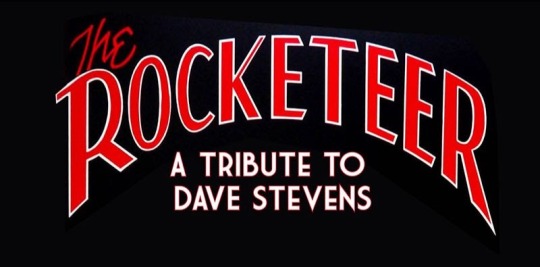
View On WordPress
#Adventure Comics#Bill Morrison#Cartoon Art Museum#Dave Stevens#downthetubes News#Michael Jantze#Ryan Sook#The Rocketeer#The Rocketeer Trust
2 notes
·
View notes
Photo




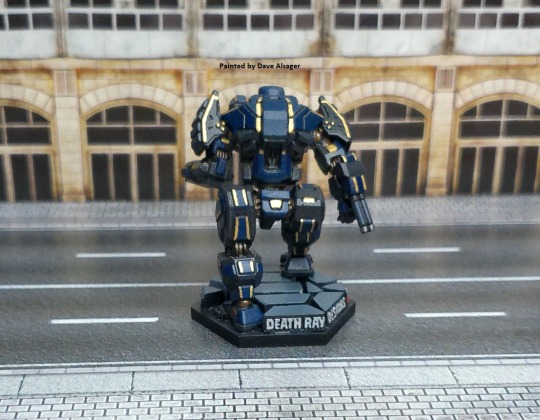
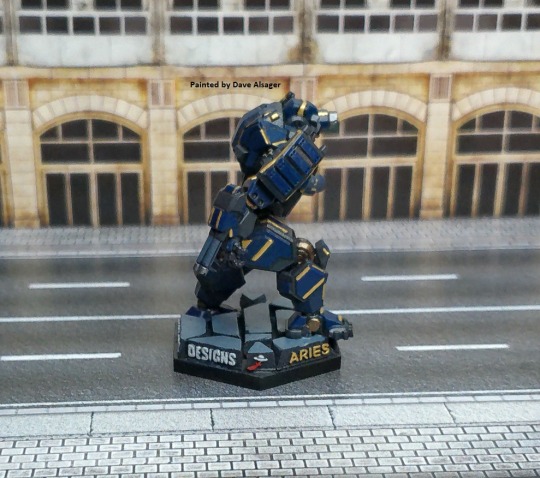



As promised...we have a winner in the Banshee IIC 2 Painting Contest!
There were several entries, all of you did great, and I definitely appreciate the love for this mech! It's been a great success!
Picking a winner was quite tough, and it came down to 2 in the end, but there has to be a single winner.
That winner is Steven Tran! His is the first up photo which is also now on the site. Link below for the mini for anyone interested in picking one up yourself.
Special commendation goes to Dave Alsager for his basing calling out not just the Banshee IIC 2 itself but paying homage to Death Ray Designs and including their Spaceship Logo too! We’ve included all 4 of those images supplied so you can see his work.
Attached below are a sampling of each entry supplied.
Thank you all for your participation!
https://ariesgamesandminis.com/index.php/shopping/product/5461-banshee-iic-2.html
#battletech #alphastrike #ironwindmetals #claninvasion #miniatures #catalystgamelabs #battlemech #mechwarrior #mwo #mecha #tabletop #tabletopgames #tabletopgaming #wargaming #wargames #hobby #scifi #sciencefiction #miniaturepainting #mech #hovertank #6mmminis #6mmscifi #feldherr #dougram #gundam #robotech #armypainter #thearmypainter #chessex
0 notes
Text
Music for Films, Vol. II: Chick Habit

For good and for ill, Quentin Tarantino’s movies have been strongly associated with postmodern pop culture — particularly by folks whose reactions to the word “postmodern” tend toward pursed lips and school-marmishly wagged fingers. There for a while, reading David Denby on Tarantino was similar to reading Michiko Kakutani on Thomas Pynchon: almost always the same review, the same complaints about characters lacking “psychological depth,” the same handwringing over an ostensible moral insipidness. Truth be told, Tarantino’s pranksome delight with flashy surfaces and stylistic flourishes that are ends in themselves gives tentative credence to some of the caviling. Critics have raised related concerns over the superficiality of Tarantino’s tendency toward stunt casting, especially his resurrections of aging actors relegated to the film industry’s commercial margins: John Travolta, Pam Grier, Robert Forster, David Carradine, Darryl Hannah, Don Johnson and so on. There might be a measure of cynicism in the accompanying cinematic nudging and winking, but it’s also the case that a number of the performances have been terrific.
The writer-director brings a similar sensibility to his sound-tracking choices, demonstrating the cooler-than-thou, deep-catalog knowledge of an obsessive crate-digger. Tarantino thematized that knowledge in his break-through feature, Reservoir Dogs (1992). Throughout the film, the characters tune in to Steven Wright deadpanning as the deejay of “K-Billy’s Super Sounds of the Seventies”; like the characters, the viewer transforms into a listener, treated to such fare as the George Baker Selection’s “Little Green Bag” (1970) and Harry Nilsson’s “Coconut” (1971). As with the above-mentioned actors, Tarantino has sifted pop culture’s castoffs and detritus, unearthing songs and delivering experiences of renewed value — and thereby proving the keenness of his instincts and aesthetic wit. “Listen to (or look at) this!” he seems to say, with his cockeyed, faux-incredulous grin. “Can you believe you were just going to throw this out?” And mostly, it works. If the Blue Swede’s “Hooked on a Feeling” (1974) has become a sort of semi-ironized accompaniment to hipsterish good times, that resonance has a lot more to do with Tim Roth, Harvey Keitel and Co. cruising L.A. in a hulking American sedan than with the Disney Co.’s Guardians of the Galaxy (2014).
In Death Proof (2007), Tarantino’s seventh film and unaccountably his least favorite, soundtrack and screen are both full to bursting with the flotsam and jetsam of “entertainment” conceived as an industry.
youtube
In just the opening minutes, we see outmoded moviehouse announcements, complete with cigarette-burn cue dots; big posters of Brigitte Bardot from Les Bijoutiers du claire de lune (1958) and of Ralph Nelson’s Soldier Blue (1970) bedecking the apartment of Jungle Julia (Sydney Tamiia Poitier); the tee shirt worn by Shanna (Jordan Ladd), which bears the image of Tura Satana; and strutting under all of it are the brassy cadences of Jack Nitzsche’s “The Last Race,” taken from his soundtrack for the teensploitation flick Village of the Giants (1965). Bibs and bobs, bits and pieces of low- and middle-brow cinema are cut up and reconstructed into a fulsome swirl of signs. And there’s an unpleasant edge to it; the cuts are echoed by the action of the camera, which has been busily cleaving the bodies of the women on screen into fragments and parts. First the feet of Arlene (Vanessa Ferlito), propped up on a dashboard; then Julia, all ass and gams; then Arlene’s lower half again, chopped into slices by the stairs she dashes up (“I gotta take the world’s biggest fucking piss!”) and by the close-up that settles on her belly and pelvis, her hand shoved awkwardly into her crotch.
As often happens in Tarantino’s movies, furiously busy meta-discursive play collapses the images’ problematic content under multiple levels of reference and pastiche. The film is one half of Grindhouse (2007), Tarantino’s collaboration with his buddy Robert Rodriguez, an old-fashioned double-feature comprising the men’s love letters to the exploitation cinema of the 1960s and 1970s. In those thousands of movies — mondo, beach-cutie, nudie-cutie, women in prison, early slasher, rape-revenge, biker gang, chop-socky, Spaghetti Western and muscle-car-worship flicks (and we could add more subgenres to the list) — symbolic violence inflicted on women’s bodies was de rigueur, and frequently the principal draw. Tarantino shot Death Proof himself, so he is (more than usually) directly responsible for all the framing and focusing — and he’s far too canny a filmmaker not to know precisely what he’s doing with and to those bodies. The excessive, camera-mediated gashing and trimming is a knowing, perhaps deprecating nod to all that previous, gratuitous T&A. His sound-tracking choice of “The Last Race” metaphorically underscores the point: in Bert I. Gordon’s Village of the Giants, bikini-clad teens find and consume an experimental growth serum, which causes them to expand to massive proportions. Really big boobs, actual acres of ass. Get it?
Of course, all the implied japing and judging is deeply embedded in the film’s matrix of esoteric references and fleeting allusions. You’d have to be very well versed in the history of exploitation cinema to pick up on the indirect homage to Gordon’s goofy movie. But as in Reservoir Dogs, Tarantino doesn’t just gesture, he dramatizes, folding an authoritative geekdom into the action of Death Proof. In the set-up to Death Proof’s notorious car crash scene, Julia is on the phone, instructing one of her fellow deejays to play “Hold Tight!” (1966) by Dave Dee, Dozy, Beaky, Mick & Tich. Don’t recognize the names? “For your information,” Julia snorts, Pete Townsend briefly considered abandoning the Who, and he thought about joining the now-obscure beat band, to make it “Dave Dee, Dozy, Beaky, Mick, Tich & Pete. And if you ask me, he should have.”
youtube
It’s among the most gruesomely violent sequences in Tarantino’s films (which do not run short on graphic bloodshed), and Julia receives its most spectacular punishment. Those legs and that rump, upon which the camera has lavished so much attention, are torn apart. Her right leg flips, flies and slaps the pavement, a hunk of suddenly flaccid meat. Again, Tarantino proves himself an adept arranger of image, sign and significance. Want to accuse him of fetishizing Julia’s legs? He’ll materialize the move, reducing the limb to a manipulable fragment, and he’ll invest the moment with all of the intrinsic violence of the fetish. He’ll even do you one better — he’ll make that violence visible. Want to watch? You better buckle up and hold tight.
Hold on a second. “Hold Tight”? The soundtrack has passed over from intertextual in-joke to cruel punchline. It doesn’t help that the song is so much fun, and that it’s fun watching the girls groove along to it, just before Stuntman Mike (Kurt Russell) obliterates them, again and again and again. The awful insistence of the repetition is another set-up, establishing the film’s narrative logic: the repeated pattern and libidinal charge-and-release of Stuntman Mike’s vehicular predations. It is, indeed, “a sex thing,” as Sheriff Earl McGraw (Michael Parks) informs us in his cartoonish, redneck lawman’s drawl. Soon the sexually charged repetitions pile up: see Abernathy’s (Rosario Dawson) feet hanging out of Kim’s (Tracie Thom) 1972 Mustang, in a visual echo of Arlene’s, and of Julia’s. Then listen to Lee (Mary Elizabeth Winstead) belt out some of Smith’s cover of “Baby It’s You” (1969), which we most recently heard 44 minutes before, as Julia danced ecstatically by the Texas Chili Bar’s jukebox. Then watch Abernathy as she sees Stuntman Mike’s tricked-out ’71 Nova, a vibrating hunk of metallic machismo — just like Arlene saw it, idling menacingly back in Austin, with another snatch of “Baby It’s You” wisping through that moment’s portent.
For a certain kind of viewer, the Nova’s low-slung, growling charms are hard to resist, as is the sleazy snarl of Willy DeVille’s “It’s So Easy” (1980; and we might note that Jack Nitzsche produced a couple of Mink DeVille’s early records, connecting another couple strands in the web) on the Nova’s car stereo. Those prospective pleasures raise the question of just who the film is for. That may seem obvious: the same folks — dudes, mostly — who find pleasure in exploitation movies like Vanishing Point (1971), Satan’s Sadists (1969) or The Big Doll House (1971). But there are a few other things to account for, like how Death Proof repeatedly passes the Bechdel Test, and how long those scenes of conversation among women go on, and on. Most notable is the eight-minute diner scene, a single take featuring Abernathy, Kim, Lee and Zoë (Zoë Bell, doing a cinematic rendition of her fabulous self, an instance of stunt casting that literalizes the “stunt” part). Among other things, the women discuss their careers in film, the merits of gun ownership and Kim and Zoë’s love of (you guessed it) car chase movies like Vanishing Point. One could read that as a liberatory move, a suggestion that cinema of all kinds is open to all comers. All that’s required is a willingness to watch. But watching the diner scene becomes increasing claustrophobic. The camera circles the women’s table incessantly, and on the periphery of the shot, sitting at the diner’s counter, is Stuntman Mike. The circling becomes predatory, the threat seems pervasive.
If you’ve seen the film, you know how that plays out: Zoë and Kim play “ship’s mast” on a white 1970 Dodge Challenger (the Vanishing Point car); Stuntman Mike shows up and terrorizes them mercilessly; but then Abernathy, Zoë and Kim chase him down and beat the living shit out of him, likely fatally. In another sharply conceived cinematic maneuver, Tarantino executes a climactic sequence that inverts the diner scene: the women surround Stuntman Mike, abject and pleading, and punch and kick him as he bounces from one of them to another. The camera zips from vantage to vantage within the circle, deliriously tracking the action. All the jump cuts intensify the violence, and they provide another contrast to the diner’s scene’s silky, unbroken shot. The sounds and the impact of the blows verge on slapstick, and our identification with the women makes it a giddily gross good time.
youtube
So, an inversion seeks to undo repetition. Certainly, Stuntman Mike’s intent to repeat the car-crash-kill-thrill is undone, and predator becomes prey. But, as is inevitable with Tarantino’s cinema, there are complications, other echoes and patterns to suss out. For instance: as the women stride toward the wrecked Nova, while Stuntman Mike pathetically wails, the camera zooms in on their asses. Bad asses? Nice asses? What’s the right nomenclature? To make sure we can put the shot together with Julia’s first appearance in the film, Abernathy has hiked up her skirt, revealing a lot of leg. Repetition reasserts itself. In an exacerbating circumstance, Harvey Weinstein’s grubby fingerprints are smeared onto the film. Rodriguez’s Troublemaker Studios is credited with production of Grindhouse, but Dimension Films, a Weinstein Brothers company, handled distribution.
When the film cuts to its end titles, we hear April March’s “Chick Habit” (1995), with its spot-on lyric: “Hang up the chick habit / Hang it up, daddy / Or you’ll never get another fix.” And so on. Even here, where the girl-power vibe feels strongest (cue Abernathy burying a bootheel in Stuntman Mike’s face), there are echoes, patterns. Note how the striding bassline of “Chick Habit” strongly recalls the pulse beating through Nitzsche’s “The Last Race.” Note that March’s song is a cover, of “Laisse tomber les filles,” originally recorded by yé-yé girl France Gall. The song was penned by Serge Gainsbourg, pop provocateur and notorious womanizer. The two collaborated again, releasing “Les Sucettes,” a tune about a teeny-bopper who really likes sucking on lollipops, when Gall was barely 18; the accompanying scandal nearly torpedoed her career. Gall refused to ever sing another song by Gainsbourg, and disavowed her hits.
Again, that’s all deeply embedded, somewhere in the film’s complicated play of pop irony and double-entendre and the sudden explosions of delight and disgust that intermittently reveal and conceal. Again, you’d have to know your pop history really well to catch up with the complications, and Death Proof moves so fast that there’s always another reference or allusion demanding your attention as the cars growl and the blood spurts. Too many signs to track, too many signals to decipher — that’s the postmodern. But perhaps we have become too glib, assuming that all signs are somehow equivalent. Death Proof insists otherwise. Much has been made of the film’s strange relation to digital filmmaking, of the sort that Rodriguez has made a career out of. Part of Grindhouse’s shtick is its goofball applications of CGI, all the scratches and skips and flaws that the filmmakers lovingly applied. They are digital effects, masquerading as damaged celluloid. Tarantino cut back against that grain, filming as much of the car chase’s maniacal stuntwork in meatspace as he safely could. Purposeful practical filmmaking, for a digitally enhanced cinematic experience, attempting to mimic the ways real film interacts with the physical environment and its manifold histories. Is that clever, or just more cultural clutter?
Amid all the clutter that crowds the characters onscreen, and their conversations in the film’s field of sound, it can be easy to lose track of the distinctions between appearances and the traces of the real bodies that worked to bring Death Proof to life. Which is why Tarantino’s inclusion of Bell is so crucial. She provides another inversion: Instead of masking her individual presence, doing stunts for other actresses in their clothes and hair (for Lucy Lawless in Xena: Warrior Princess, or for Uma Thurman in Tarantino’s Kill Bill films), Bell is herself, doing what she does best, projecting the technical elements of filmmaking — usually meant to bleed seamlessly into illusion — right onto the surface of the screen. And instead of allowing one group of girls to slip into a repeated pattern, bodies easily exchanged for other bodies, Bell’s presence and its implicit insistence on her particularity (who else can move like she does?) breaks up the superficial logic of cinema’s market for the feminine. She disrupts its chick habit. There’s only one woman like her.
youtube
Jonathan Shaw
#music for films#chick habit#jonathan shaw#dusted magazine#death proof#quentin tarantino#reservoir dogs#grindhouse#Dave Dee Dozy Beaky Mick & Tich
13 notes
·
View notes
Photo

(Jim Silke homage to Dave Stevens) homage to Bettie Page
217 notes
·
View notes
Text
My Doctor Sleep Review
Here’s the short version:
If I like The Shining movie but haven’t read the book or Doctor Sleep, will I like this? YES. It pays homage to the film beautifully but doesn’t rely on it too much, and it creates a beautiful story of it’s own.
If I’ve read both books, will I like this? Well, here’s where things get complicated. It’s definitely still worth your time for how beautifully Ewan McGregor and Kyliegh Curran bring Dan and Abra to life, but you will also probably find yourself incredibly frustrated with the third act.
My more complicated thoughts are under the cut. (Spoilers, obviously!)
Overall, the film does a wonderful job blending the differences between the movie and the book, although overall it felt to me like they were privileging the film and mostly just giving nods to the book, so that book fans could be happy. And as much as that frustrates me as a book fan, it worked! I can absolutely believe that in a world where the Overlook didn’t explode at the end of The Shining, that this would be what happened.
I guess my biggest issue was that I wanted them to mostly ignore the movie. They could keep the Overlook standing, sure, that was just fine with me, but I wished they’d followed both books’ canon basically to a T. And for the first two acts that is pretty much exactly what they did! It was almost beat for beat the book. And the things that they did change in the first two acts, I loved. I loved their take on Billy as a character!
And well, let’s talk about the good for a second, shall we?
Every actor gave a STELLAR performance and was perfectly cast. I knew I was gonna love Ewan McGregor and he went above anything I ever imagined. Abra was amazing too! She really captured Abra, her rage, and her love for her family. Rose was great, the only thing that kept catching me off guard was that she kept changing her accent and I’m not sure if it was intentional? Like there were some scenes where she sounded Irish to me, and other scenes where she sounded completely American. It could’ve been that she was Irish with the Knot and American around rubes, but it didn’t seem purposeful enough. Minor characters that really stood out were Billy and Crow Daddy, especially Crow. He never struck me as particularly interesting in the book, but he was very engaging in the film. The little boy who played Danny killed it as well. He merged the catatonic Danny from the film and the talkative Danny from the book in a way I didn’t think was possible.
Also Azzie the cat was perfect and I’ve never been so happy to see a cat in a movie in my LIFE.
The scene where Dan fell into his role as Doctor Sleep for the first time was really wonderful, and that was the first time I cried during the movie. His speech at the AA meeting, about Jack, absolutely WRECKED me. I was straight up sobbing. Because it was the first (and only) time in the movie (or the Shining movie) where you see how much Dan loved his dad, and how he’s been struggling his whole life with continuing to love a man who hurt him and his mom, tried to kill them, and that’s just as much why he drank as trying to drown out his shine. THAT’S Dan Torrance right there, and a hint towards the Jack Torrance from the novel, the one who loved and died for his family. THAT is why the Shining is a tragedy, that’s why I cried for an hour after I finished reading Doctor Sleep for the first time. It showed that Dan was finally moving on, he’d found friends and community, he broke the cycle of abuse and alcoholism.
And from there, we go into another scene of Dan helping someone pass as doctor sleep. It’s such a stark contrast to the first time. He’s comfortable with it instead of horrified by it, he’s HAPPY to help these people, to comfort them in their final moments, because he knows what that fear feels like. He’s been trying to escape that fear since the Overlook. So he sings with him, he’s not afraid to use his shine to look into his mind to make it easier for the man. For the first time in his life his shine brings him something other than pain. And I loved it.
The scene with the baseball boy was WAY more brutal than I expected it to be. Like I was genuinely surprised that they really showed the Knot torturing him like that, and all the blood. It was harrowing, and it worked so well, because before that the Knot was pretty likable. Sure, they killed kids, but we didn’t SEE it, and they’re cooky and fun! And then there’s THAT, and we see that they are monsters. I loved Abra making murder appear on Dan’s wall, and him seeing REDRUM in the mirror. Dan’s face was CHILLING.
We also GOTTA talk about Dick Hallorann. He was really perfect, and I loved how excited Dan was to see him the last time they talk. And well, I heard him tell Dan “ka is a wheel” which FLOORED me. The last thing I was expecting was a Dark Tower reference! I’m not 100 percent sure he said it, I might have misheard it, but it works. I mean, in the book, King describes many things as a wheel, and that’s a running theme in his work, so it makes sense. And that’s really what this story is about, the wheel of ka turning and the mentee becoming the mentor.
This is a scene I have slightly complicated feelings about, but I mostly liked it, and that is Dan’s conversation with Jack’s ghost at the bar. I loved how they paralleled Dan to Jack but also highlighted how Dan is his own person, and in many ways succeeded where his dad failed. I gasped incredibly loudly when Jack referred to the whiskey as medicine, and called Dan a pup, cause that is something from the book that (correct me if I’m wrong, it’s been a while) he never says in the movie. And ohhhhh god, the way Dan cried. The way he got mad and said “Don’t you want to know what happened to your family?” and how Jack finally broke character. It fucked me UP. But it was Jack from the movie basically saying fuck you to Jack from the book, which like, I GET it. It would feel really weird if Nicholson!Torrance showed ANY warmth or love to Dan in any way, but still. I mourn book!Jack Torrance every day of my life. (But would Nicholson have been able to pull it off? Probably not. So maybe it’s for the better. Steven Webber, on the other hand, from the miniseries, is MY Jack Torrance.)
And here’s where we start to get to the bad, or the things I have very complicated feelings towards.
Well first of all, there was genuinely no fucking reason to kill off Billy OR Dave. They don’t die in the book! And it’s not a great look that they killed off the two men of color who are on the good guys’ side. It’s as stupid and pointless as killing Dick Hallorann in the Shining. But I guess we gotta continue that legacy right? /s If they wanted to get Billy and Dave out of the way for the final confrontation, there were other ways for them to do it, like they did with Abra’s mom! Crow could’ve just drugged Dave. He still could’ve told Abra that her dad was dead, to manipulate and fuck with her. And hell, Dan could’ve made Billy stay behind, to take care of Dave, or to wait for Abra’s mom to get back and fill her in on what’s happening. They definitely didn’t need to fucking DIE, Mike! You don’t need them to die to raise the stakes, nothing raises the stakes like watching a child be tortured and murdered.
And well, in concept I really like Dan and Abra having their showdown with Rose in the Overlook. And uh, “waking it up.” It makes sense, I mean, he already uses the Overlook ghosts against the Knot in the book, so why not? And I liked that part. I think Dan walking around the hotel went on a little too long, like they just wanted to show off that they rebuilt the overlook set. I liked the continued parallels between Jack and Dan, but again, it highlighted how Dan was different. Like when Dan is on the stairs holding the hatchet, he’s actually playing Wendy’s role, while Rose is Jack in that instance, walking up to him with her arms out, falsely trying to placate him. She has the power in that moment. And her toying with Dan? MM. I liked that a lot. I’m a sucker for whump. And her finally getting destroyed by the Overlook ghosts was SO SATISFYING.
I had kind of thought that Dan would find a way to harness Jack’s spirit and sick her on Rose, and that would be able to be Jack’s redemption, and then Jack would be able to finally move on. It would’ve made sense, since in the book he uses Abra’s momo, but in the movie she’s not really important. Tbh I think that would’ve been the best way to let Dan finally find peace with Jack, to give us something like that moment in the book where Dan sees Jack at the end and Jack blows him a kiss. But whatever, it’s fine. I think the conflict between Dan and Rose as it was was pretty great.
If it ended with that, I would’ve been VERY happy. Maybe there could’ve been a bit of a scare with the hotel trying to possess Dan and Dan being able to fight it off, and Abra and Dan leaving, letting the boiler explode. And then maybe Dan could’ve collapsed from blood loss outside the hotel, giving the audience a bit of anxiety over whether Dan will survive or not. But it didn’t end there.
I take issue with the very premise that the ghosts would be able to possess Dan like they did Jack. Jack had so many weaknesses, more than just the alcoholism. Jack was insecure about everything in his life, his career, his role in his family, his talent of an artist, but Dan doesn’t share those insecurities, just the alcoholism. ALSO Dan’s been sober A LOT longer than Jack ever was. He’s much more skilled at resisting that temptation. Maybe back before Dan hit rock bottom and started fixing his life, I would buy it, but not Dan at this point in his life. ESPECIALLY since they couldn’t get him when he was a kid, when his shining was so much stronger. Why would they be able to get him now? Dan has a lot of similarities to his dad, but he is his own person.
But whatever. Let’s assume that it’s possible for the hotel to possess Dan. I loved that they played out some of the scenes from the Shining novel, because the climax of the Shining has my favorite moments from the whole novel. I gasped when Abra said “You’re not my Uncle Dan. You’re just a mask.” And I ALSO gasped when he said “let’s unmask then,” (or something to that effect) because I thought they were gonna do MY FAVORITE moment from the Shining, when the hotel bashes Jack’s face in with the mallet and we see a different ghost after each hit. As cool as seeing that would’ve been, I’m glad it didn’t happen, cause Dan would’ve been gone after that. And oh god, the hug between Dan and Abra. It hurt. And Abra remembering the boiler, knowing it’s gonna blow.
And well, finally seeing the Overlook burn was VERY satisfying. In a lot of ways this film was both a love letter to Kubrick and a “fuck you” to Kubrick simultaneously. I wish they’d leaned into the “fuck you” side more because honestly, WHY should we keep celebrating him or his films? Especially with the Shining. The pure disrespect he showed to the source material, and to Stephen King, and of course, the way he tortured Shelly Duvall on set.
I think my feelings of betrayal come down to this: I was COMPLETELY blindsided by Dan’s death. I TRULY did not expect Dan to die. I thought that would be departing from the book too much, and honestly I didn’t think King would’ve gone for that. Like, I started to get worried when he got hit in the femoral artery, but, perhaps foolishly, I kept holding out hope that he would be okay. And I know the whole point of the end is that yes, he’s dead, but he’s good, but he deserved to LIVE and die of old age. The Overlook should not have been given the satisfaction of getting him, even if it was destroyed in the process.
I did like that as he died Wendy was there with him, since in the movie she’s the one who actually loved him. But mostly I was in a state of mixed rage and sadness, because Ewan SOLD that performance. He was perfect. He IS Dan Torrance. But I did not come to the theater to watch Dan suffer Jack’s fate. I came to see Dan finally move on from his trauma and embrace his shine!!
Ultimately, It feels like the movie undermined it’s own climax. The whole film was building to Rose’s defeat, which is then COMPLETELY overshadowed by the hotel trying to use Dan to get Abra. It focused too much on the Shining, and forgot that Doctor Sleep is DIFFERENT. Dan is not Jack. Abra is not Dan. There are parallels, of course, but they are different. And why undermine your more interesting villain? The ghosts of the Overlook PALE in comparison to how interesting and engaging Rose is. It was a great nod to fans of the book, and as a book fan I enjoyed it, but I think it made the film weaker.
If Flanagan wanted to do the ending scenes of the Shining, he should’ve just remade the Shining, for God’s sake! And actually, I would’ve liked that very much, Ewan McGregor could make a VERY good Jack, as shown in the scenes when he’s possessed by the hotel. I actually would love to see adaptations of The Shining and Doctor Sleep where the same actor plays Jack and Dan. I think that would produce fantastic performances and really force the actor to highlight the differences between the characters. And anyway, we need a new version of the Shining. Steven Weber and Rebecca Du Mornay are PERFECT in the miniseries but it’s just that, a network television miniseries, and it’s aged pretty poorly. A new Shining remake is gonna happen eventually, if Kubrick’s estate ever gives up those rights.
And finally! They ignored the BEST PLOT TWIST in the book!!!!! That Dan is literally Abra’s uncle! They kinda set it up, too, which is extra frustrating. I wonder if it was present in an earlier version of the script and got cut? I had a sinking feeling that they weren’t gonna do it when Dave was killed, but like, without that reveal, the audience is gonna be left with a lot of questions. Namely, WHY was Abra drawn to Dan? And of course, it’s because he’s her uncle, but in the movie we never find that out. I wouldn’t be surprised if it shows up on Cinema Sins or whatever for being a plot hole, which is frustrating, because it’s NOT. It’s just a lazy oversight in the film. I also wished we got to see more of Abra’s parents, and Dan meeting Abra’s mom! But I guess they couldn’t include any of that in the movie since they basically cut Momo out completely. Still, that in itself is frustrating. Abra’s momo is so important to Abra in the book. In general it kinda felt like they elected to focus more on Dan and his relationship to Jack than Abra and her family, when in the book they’re pretty evenly balanced!
It’s frustrating, because the first two acts of the film are nearly perfect. And the third act has a lot going for it too, but it is just not the way to handle the ending, in my opinion.
My final feelings are: Dan Torrance is not Jack. That is the whole POINT of Doctor Sleep. And he did not deserve to burn in that hotel. He deserved to finally live out his life in happiness and with the family he’s built for himself. And that will always upset me.
#doctor sleep#the shining#king posting#long post#jesus this got fucking LONG#maybe I can sleep now that i've gotten all this out of my system#review
2 notes
·
View notes
Text
Top 10 Steven Universe Episodes (Season 4)
#10. Tiger Philanthropist: This long awaited follow-up to Tiger Millionaire from Season 1 showcases Steven taking on a new wrestling persona to spice things up. If there’s one thing that should be taken away from this episode, it’s that sometimes you gotta move on from the thing what you had so much fun doing. I like how this episode handled that dilemma and Steven’s opponents have some very creative costumes.
#9. Buddy’s Book: Connie and Steven read a journal at a library about the recounts of a man who explored various Gem locations. I love how Jamie is used to portray Buddy as opposed to creating an original character. Much like Historical Friction back in Season 2, Jamie once again shines as the lead and the way that retell the history in this episode is both funny and creative.
#8. Future Boy Zoltron: Steven helps predict people’s future thanks to the help of Garnet’s future vision. He meet a mysterious man who seems to be very depressed and tries his best to cheer him up. Without giving away the ending, this was one of the most heartfelt episodes outside of the Crystal Gem storyline and it’s what puts this episode on the list. I especially like how honest Steven is, and how each future is portrayed. Also, Steven dressed up as Zoltron just make him look adorable.
#7. The Zoo: Part of the Blue Diamond arc, this episode focuses on the human zoo and how it operates. This gives new perspective to the mysterious Pink Diamond and her fascination with humans. These people seem very naive, given that they were born long after their ancestors were taken from Earth. At the same time, they’ve developed their own culture here, while still being kept in check by the Diamonds.
#6. Three Gems and a Baby: It’s always a real treat watching a flashback episode. This time around we see how the Gems reacted to baby Steven for the first time. Of course they’re clueless on what to make of him, but fortunately Greg is their to take care of him. I also like how snow is drawn in this series. It feels so soft and fluffy and is just really satisfying watch it fall.
#5. Storm in the Room: This is the closet Steven ever got to talking to his Mom face to face and boy is it wonderful. Sure Rose is just a manifestation of what Steven wants his Mom to be, but that doesn’t make their conversation any less interesting or important. Also, I just love how the room operates in general. Steven just thinks it and it becomes real. Wish my room was like that.
#4. Last One Out of Beach City: Pearl joins Steven and Amethyst on a night out for some fun and adventure. Along the way Pearl meets this mysterious woman who reminds her of Rose. While we don’t hear the woman speak, the fact that she and Pearl get along so well shows that they have good chemistry together. Plus, this episode includes a special guest appearance by garage rock artist, Mike Krol. He’s actually a pretty decent musician, you should check out his music.
#3. Kindergarten Kid: This episode had me in stitches! In this homage to classic Road Runner and Wile E. Coyote cartoons, Steven and Peridot try to catch a gem monster, to hilarious results. I just love the timing of the humor and it’s so refreshing to see a full on slapstick cartoon in this day and age where they’re so rare.
#2. Gem Harvest: This is pretty much the Thanksgiving episode (even though they don’t say it). In addition to introducing Cousin Andy (played by Dave Willis from Aqua Teen Hunger Force), this episode also brings in new surprises and perspective to the cast. It also helps that this feels very much like fall, with creative uses of warm colors in addition to the normal color palette of the series.
#1. Mindful Education: You all knew this was going to be #1. I mean, it’s such a great episode, on of the best in the entire show actually. It’s got one of the best songs, the most creative animation and features great character development from Connie and Steven. The best aspect of this episode is how it handles the practice of meditation without being preachy.
Conclusion: Season 4 continues to strive to bigger and better things for the series. I personally believe 3 seasons is long enough for a show to go on without overstaying it’s welcome. Yet Steven Universe is one of the few exceptions because it continues to value quality over quantity. I look forward to continuing to watch the show for as long as it still produces great episodes. Honorable mentions go to Are You My Dad?, I Am My Mom, Lion 4: Alternate Ending, The New Crystal Gems, Onion Gang, Steven’s Dream and Rocknaldo. Thanks for reading and I’ll see you next time ;)
#steven universe#Believe in Steven#Rebecca Sugar#mike krol#mindful education#animation#comedy#fantasy#crystal gems#cartoon network#top 10#season 4#thanksgiving special#like#share#follow#reblog
1 note
·
View note
Text
Did you know...
That Danzig’s classic logo:
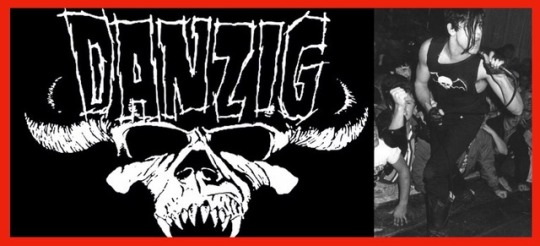
Was originally designed and created for a Marvel comic book cover?

Crystar
Today, not many comic book fans remember the Marvel character Crystar. This relatively obscure 80s character was originally created and developed for a line of toys. Crystar was a crystalline warrior who came from the world known as Crystallium-where everything was made of crystal and most characters had bad, rock-themed pun names like Ogeode, Feldspar or Stalax. Marvel Comics later created a Crystar comic book to accompany and promote Remco’s Crystar toyline. This is one of Michael Golden’s many classic comic book covers and is probably recognizable to any die-hard Danzig fan. I doubt Michael Golden imagined when he first created this cover, that someday one aspect of this image would be the identifying symbol of a major band. I’ve always wondered if Michael Golden receives any kind of compensation or recognition for creating the original comic cover that formed the basis of that now famous and highly-merchandised Danzig logo.
Marvel partnered with the now-defunct toy company Remco to produce a comic book series to expand the Crystar line of action figures and playsets. This was a common practice in the 70s and 80s. Marvel had also found success with such toy/comic crossovers like the Shogun Warriors, Micronauts and ROM: Spaceknight line of toys. Since the storytelling abilities of the toy industry were so limited, many toy companies benefited by having a comic book expand upon the characters and universe of a limited toy line. Companies like Marvel benefitted by having a large captive audience of kids who were familiar with the toys but would never have bought a comic book otherwise. This would not be the last time Marvel would create a comic series to promote a line of toys. G.I. Joe, He-Man, Transformers and even the beloved Secret Wars line of toys were all popular toy lines that Marvel published comic books to accompanying and promote. He-Man actually had the rare distinction of being one of the only toy lines to have a promotional comic book published by both Marvel and D.C. Toy companies like Remco used to view comic books as an advertising mechanism to draw in new kids while also being a cheap, easy way to create new characters that could eventually become new toys.
The Punk Connection
I’ve always loved the Misfits and by extension Glenn Danzig. Back in my punk days, The Misfits were always my favorite band, usually tied with the Dead Kennedys and the Germs (but I also loved T.S.O.L, the Buzzcocks, The Adicts, Crass and Minor Threat). As a fan of classic horror, sci-fi, and monster movies, I always appreciated The Misfits’ and Danzig’s use of horror and sci-fi imagery in their lyrics and album art. That was actually one of the things that I loved about the Misfits above all other bands; the imagery. All that Vincent Price and Plan 9 imagery really appealed to a kid like me. When I was a punk, comic books were the last thing on my mind. I hadn’t read or collected comics in years by that point. So I never made the connection between Danzig and comic books, despite being aware of Crystar as a character. I remember owning several issues of the Crystar Marvel series as a kid. After all, I am a child of the late 80s and early 90s who grew up owning many toys from some of the most iconic toy lines of the 80s. I was initially surprised that Glenn Danzig would show an interest in comics and co-opt the cover of a Marvel comic book series that targeted kids and was designed to promote a corresponding toy line. That fact is even more surprising looking at some of his later, solo-era imagery and lyrics.
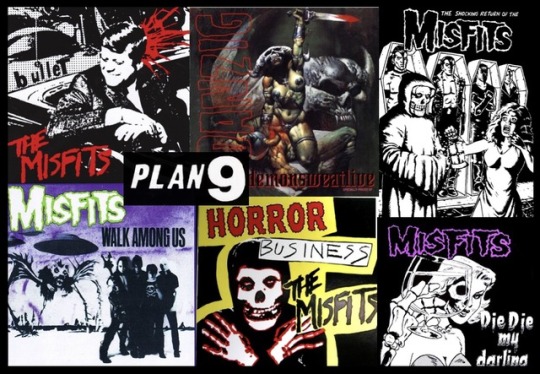
Looking at that kind of album art, I don’t know why anyone would be surprised Danzig digs comics. As it turns out, Glenn Danzig has been into comics for years. This is why he used so much of that sci-fi/horror imagery in his early days in the Misfits and borrowed themes and concepts from comic books like Crystar and Conan. The misfits often used a comic book/Lichtenstein-esque pop-art art style as evidenced in their Bullet imagery with JFK and their Horror Business album art. Danzig also chose an HR Giger painting as one of his later albums. When you compare Frazetta-era “barbarian/warrior” artwork with Danzig’s comics or album art, you can see the obvious inspiration. In the 90s, Danzig actually began publishing his own line of comic books, Verotik comics (Verotik was a portmanteau of the words “violent” and “erotic”). It would be easy to looks at some of the comic books he’s published and dismiss them as immature or sophomoric. After all, they do feature most of the things pubescent boys are into-big pecs, bigger boobs and the biggest swords. It would also be easy to view Danzig’s foray into the medium of comics as a cash grab. This was the era that outsiders and speculators were coming into the comic book field en masse. Many people who had zero interest in producing quality comics came into the field with delusions of making a fortune based on the newfound popularity of comic books.
The Bubble Goes Burst
When the comic book speculator bubble burst in the mid-to-late-90s, many of these new imprints and comic lines went under; never to return to publication. Verotik has managed to outlive Homage, Wildstorm, Continuity, Legend, Malibu, Chaos!, Caliber, Comico, Defiant, Kitchen Sink Press and Eclipse (to name a few). It’s important to remember that those were among the most acclaimed indie comic companies during the 90s comic boom. All of those companies were either bought, closed or are otherwise now defunct. While it is true Verotik published way fewer comics than most of those other companies, Verotik still publishes comics today. Glenn Danzig outlasted them all. Surprisingly, Danzig’s line of Verotik comics have been continuously published since 1994, with Glenn Danzig himself still involved. While other, more mainstream comics have been adapted into the Hollywood Blockbusters we all know, Danzig adapted one of his comics, Grub Girl, into a porno that came out in 2006. Say what you will about adapting a comic book into pornography... it shows that Danzig has found a way to maintain an almost entirely adult audience while simultaneously promoting his line of comics and spinning those characters off into another medium (film).

Mainstream comic readers have not spoken kindly about some of Verotik’s offerings. I certainly don’t like everything that Dark Horse, or Marvel, or Image publish. Many comic fans have dismissed Danzig’s line of comic books for their perceived “low quality.” However, if you go back and examine some of his earliest works, you’d be surprised by some of the names you’d recognize. Many well known, popular writers and artists of today had work published in one of Verotik’s comic books. Grant Morrison actually had a story published in the first issue of Verotika, something he never mentions. Simon Bisley contributed some really solid artwork on many Verotik comics, as did Frank Frazetta.
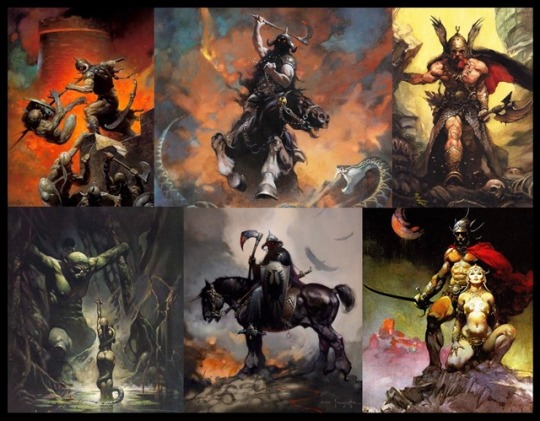
Some of the most iconic Frazetta artwork (beyond his legendary Conan art of course) appeared in Verotik comics. The “Death Dealer” image has come to typify the classic Frazetta “barbarian” style. The Frank Frazetta style of heavily painted Barbarian/Warrior art has almost completely disappeared from the today’s modern comics. In my opinion, Danzig and his line of Verotik comics are almost solely responsible for the preservation of that kind of 80’s barbarian/sword-and-sorcery/heavy metal comic book aesthetic. By the 90s, that genre of comic and it’s associated art style had fallen out of favor with the general public and was considered dated by many critics and fans alike. This kind of hyper-masculine Barbarian imagery existed only on the fringes of pop culture and is virtually nonexistent today. What had been an industry staple was now relegated to a tiny niche audience. Fantasy artwork like that is sorely absent from today’s comic book marketplace. Rafa Garres, Eric Canete, Liam Sharp, Arthur Suydam, Dave Stevens and Kent Williams all contributed artwork to at least one of Verotik’s many comic books. When you re-examine some of the covers to Verotik titles like Jaguar God, Valkyrie or Weird Voodoo, they still look pretty damn good even by modern standards. Painted covers like these have withstood the test of time; good writing and artwork often endures and stays relevant for years.

Legacy of Brutality (and Comic Books)
It‘s a shame that Danzig doesn’t get more recognition for his contribution to comic books from the modern comic book community. I’ve never heard anyone mention Danzig and comics in the same sentence. For a guy who’s written songs for Johnny Cash and Roy Orbison, owns his own label (Plan 9), had a long history with the Misfits, found renewed success with Samhain and again with his solo project Danzig...the guy has quite a resume. Even many punks don’t know that Samhain was essentially a punk supergroup, since their debut album featured former members of Minor Threat, Rosemary’s Babies and Reagan Youth. To switch gears entirely and begin writing and publishing comics shows how seriously he took his interest in comic books. He never compromised his artistic integrity and made exactly the kind of comics and music he wanted. Whether you personally like the results or not, you should respect that kind of commitment and discipline. It’s unfortunate for Danzig since many people in the punk/metal community would mock his comic book pursuits, and the comic industry often resents outsiders coming into the field from another medium, he rarely gets recognition from either community.
His contribution to music cannot be understated and his foray into comics cannot be dismissed as a mere cash grab or way to stay relevant. He put his money where his mouth was and was willing to invest his own money and time into his life-long love of comics. I honestly wish more people would do that. Danzig teamed with some of the best fantasy comic artists in the field at the time and wrote many of Verotik’s comics himself. He is also a graphic artist in his own right who is known to do sketches at signings and conventions. Danzig has created music for over 41 years and for 24 years he has also been involved in the production of comic books. That alone makes you a pretty cool guy in my book. His comics are about as “creator owned” as it gets and in that 24 years he has made the kinds of comics that he wants to make. You can’t dismiss that kind of artistic determination. For a guy who has always been known as the “Heavy Elvis” of punk music, his artistic portfolio is surprisingly diverse. Danzig should be accepted by the comic book community as being every bit as worthy of inclusion as any other, more accepted comic book creators.
Don’t sleep on @therealglenndanzig-blog, the dude might just surprise you.
-AG
#glenn danzig#crystar#comic writer#marvel comics#comics#comic art#comic books#did you know#punk rock#misfits#urban legend#article#comic book artifacts#fantasy#swords and sorcery#fun facts#random facts#horror#sci fi#frank frazetta#dave stevens#samhain#the misfits#comicmemes#comicart#comic book art#michael golden#factoid#its the truth
21 notes
·
View notes
Text
The Original Rocketeer 2 Plans Were Very Different
https://ift.tt/3f87Djm
The Rocketeer celebrated its 30th anniversary earlier this summer. The 1991 film starred Bill Campbell as Cliff Secord, a young stunt pilot who ends up in possession of an experimental jetpack and ends up embroiled in a crossfire between Nazi spies (led by Timothy Dalton), and the mafia (led by Paul Sorvino). It’s a terrific, charming action-adventure film, effectively paying homage to the movie serials of the 1930s and other Hollywood flicks of the era, all set to one of James Horner’s very best scores. But despite positive reviews, The Rocketeer wasn’t quite the Batman-sized blockbuster that studio Buena Vista Pictures hoped for at the time, and there were never any sequels produced.
While based on a gorgeous comic by Dave Stevens (who worked closely with the film’s writers Danny Bilson and Paul De Meo to adapt the character to the screen), there weren’t a whole lot of Rocketeer comics to adapt in the first place. The film loosely adapts the first handful of Stevens’ comics, making changes for the screen where appropriate and necessary. Nevertheless, if you check out those comics (and you absolutely should, they’re incredible), you can see the broad strokes of the movie right there on the page.
The Rocketeer 2 Story
The studio definitely had a Rocketeer franchise in mind when they went into production on the film, and had already signed Bilson and De Meo on to write a sequel if the box office warranted it.
“I know we were signed for a sequel [but] we never sat down with it,” Bilson tells Den of Geek. “It was just between Dave [Stevens], Paul [De Meo], and I.”
Read more
Movies
Dick Tracy: The Long Journey of the 1990 Blockbuster
By Mike Cecchini
Movies
How Flash Gordon Caught Lightning in a Bottle
By Kirsten Howard
And while there was never a script written for The Rocketeer 2, the intention was always to adapt the next story from Stevens’ Rocketeer comics, which would have seen Cliff follow his girlfriend to New York City as she pursued her acting and modeling career. Of course, just as the first movie had to take some liberties with adapting Stevens’ first Rocketeer story, so would The Rocketeer 2 have had to change things up a little bit from “Cliff’s New York Adventure.”
For one thing, Cliff finds himself allied with a character who is quite clearly pulp hero The Shadow in all but name. It’s a tradition carried over from the first story arc, where Cliff’s rocket pack wasn’t invented by Howard Hughes as we see in the film, but proto-superhero Doc Savage (who is seen but never actually named). For another, the grotesque villain Lothar who bedevils Cliff, Peevy, and Jenny in the first film was actually the key heavy in this second arc. Since Lothar was dispatched at the climax of the first movie, he obviously wouldn’t have been available for The Rocketeer 2.
“We were always going to do some version of the New York thing, [but] we didn’t figure it out,” Bilson says. “We didn’t know who the bad guy was. We knew it was going to be the next movement of the story, [but] it wouldn’t have had Lothar or any of that. It would have been Cliff and Jenny and bad guys in New York. That was all we knew. Again, we got nerfed pretty hard as soon as it opened.”
The Return of the Rocketeer
With a respectable but not franchise-starting box office haul, hopes for The Rocketeer 2 fizzled out pretty quickly. But 30 years later, there’s hope once again. Disney+ has just announced plans for The Return of The Rocketeer, what appears to be a legacy sequel to the original movie.
David and Jessica Oyelowo are producing, and David may star under the helmet and rocket pack. The story will focus on “a retired Tuskegee airman who takes up the Rocketeer mantle,” according to Deadline. This sounds like a fantastic way to move the story forward while still remaining true to the vision of both the original comics and the film. Ed Ricourt (Now You See Me) is writing the screenplay.
cnx.cmd.push(function() { cnx({ playerId: "106e33c0-3911-473c-b599-b1426db57530", }).render("0270c398a82f44f49c23c16122516796"); });
We’ll have much more on the entire history of The Rocketeer movie from Danny Bilson very soon!
The post The Original Rocketeer 2 Plans Were Very Different appeared first on Den of Geek.
from Den of Geek https://ift.tt/3gI0hpB
0 notes
Text

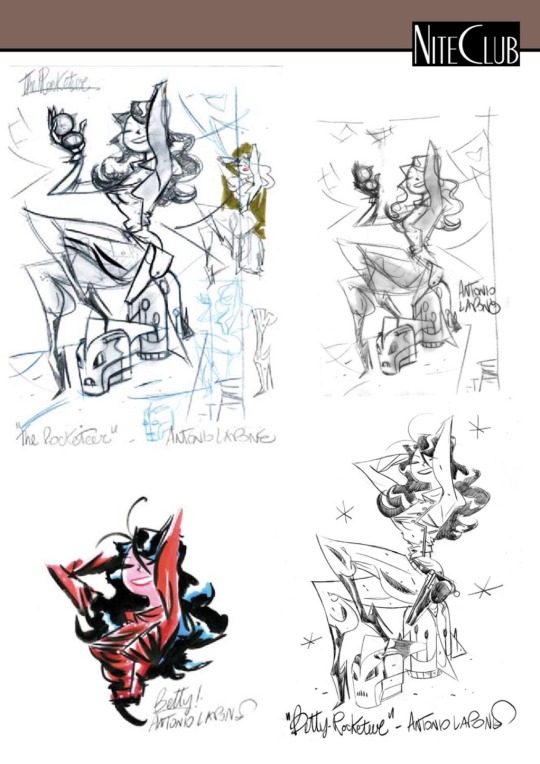
Homage to Dave Stevens by Antonio Lapone
49 notes
·
View notes
Photo


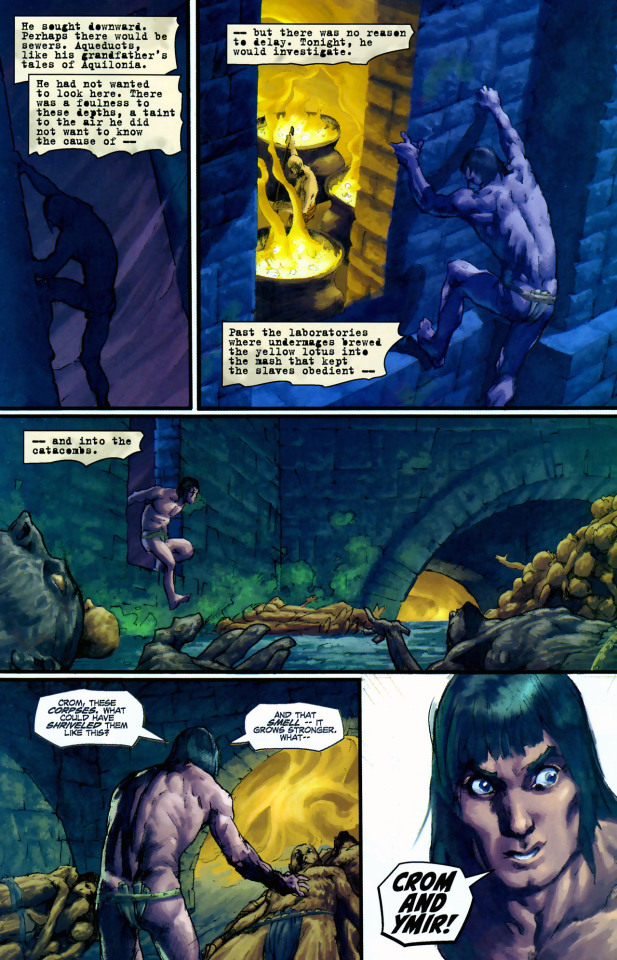

Conan #4: The Gates of Paradise by Kurt Busiek (W), Cary Nord (A), Thomas Yeates (A), Dave Stewart (C) and Richard Starkings (L)
Dark Horse Comics
10 notes
·
View notes
Photo

My @port_city_comics retailer exclusive cover for @archiecomics #vampironica New Blood #4 is out this week! Homage to the great Dave Stevens. Inks by me, colors by Ceci de la Cruz! To order: tinyurl.com/yd46tme8 #ann4rt #annazhuo #archie #archiecomics #vampironica #davestevens #comic #variant My retailer exclusive cover for @ArchieComics #vampironica New Blood #4 is out this week! Homage to the great Dave Stevens. Inks by me, colors by Ceci de la Cruz! To order: shop.ann4rt.com #ann4rt #annazhuo #archie #archiecomics #vampironica #davestevens #comic #variant #homage #portcitycomics #azhuo #variantcover https://www.instagram.com/p/CBm4Sz-h7JV/?igshid=2g06wodtniph
#vampironica#4#ann4rt#annazhuo#archie#archiecomics#davestevens#comic#variant#homage#portcitycomics#azhuo#variantcover
0 notes
Photo

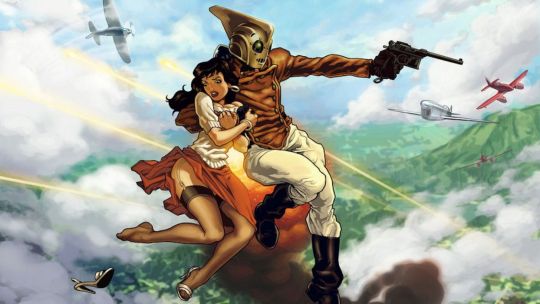

The Rocketeer is a fictional superhero appearing in American comic books originally published by Pacific Comics. Created by writer/artist Dave Stevens, the character first appeared in 1982 and is a homage to the Saturday matinee serial heroes from the 1930s through the 1950s.
The Rocketeer's secret identity is Cliff Secord, a stunt pilot who discovers a mysterious jetpack that allows him to fly. His adventures are set in Los Angeles and New York in 1938, and Stevens gave them a retro, nostalgic feel influenced by the King of the Rocket Men and Commando Cody movie serials (both from Republic Pictures), and pinup diva Bettie Page.
The character was adapted into the 1991 Walt Disney Pictures film The Rocketeer by director Joe Johnston.
1 note
·
View note